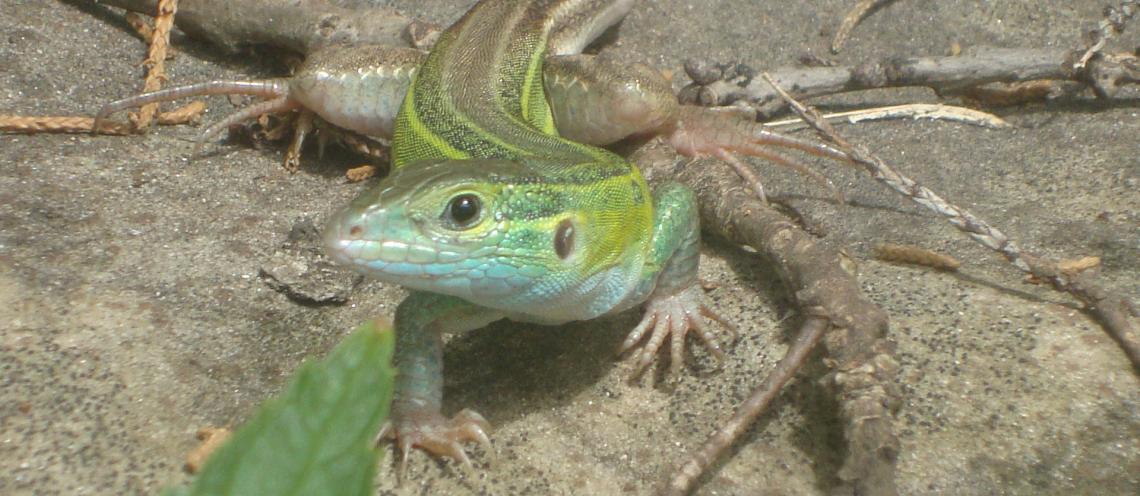
Veterinary Viewpoints
Thursday, February 11, 2016
Oklahoma Reptiles
Oklahoma is home to 99 species and subspecies of reptiles (turtles – 19, lizards – 19, snakes – 60, and alligator – 1). Oklahoma is third following the states of Texas and Florida in diversity of reptiles.
Pictured above is the Six Lined Racerunner.
Of the 60 species of snakes calling Oklahoma home, only nine are significantly venomous to people. These snakes prefer to be left alone. Snake bites are rare and occur mostly when people try to handle or kill them.
Reptiles are an important part of the local ecosystem. Aquatic turtles keep wetlands healthy. Lizards and small snakes eat a lot of bugs while larger snakes eat rodents.
Reptiles are also a food source for other animals like birds of prey and mammals.
The balance this creates is enjoyed when we walk at places like Sanborn and Boomer Lake.
Many reptiles do not lay eggs but give birth to live young. This holds true for all of Oklahoma’s venomous species.
There are threats to Oklahoma’s reptiles.
Habitat loss can occur due to urbanization, deforestation, conversion of ranch land to cropland or the draining of wetlands.
Roadways are like laser beams that cut through a habitat. Reptiles and other small animals have a very poor crossing success rate.
In addition, each evening the road retains the sun’s warmth and many reptiles seek it out to bask in it. Each spring turtles are often hit by a vehicle as they leave the wetland in search of a place to lay their eggs.
Another threat to reptiles is that many are killed out of fear or intolerance. It is important to remember the role they play in maintaining a balanced ecosystem.
Without reptiles there would be a significant increase in the number of bugs and rodents. The bugs and rodents, in turn, would eat an unsustainable amount of vegetation.
Reptiles are fascinating and many certainly make excellent pets. It’s always best to find a captive bred source for getting a pet reptile. Your pet will be healthier, have fewer parasites and you won’t be depleting the native populations.
Just like people, reptiles can get disease. There are new viruses being discovered every year.
One disease of particular importance is the rana virus that is lethal to turtles and some other reptiles and amphibians. To prevent the spread of this and other diseases, do not release pets into the wild or move reptiles from one area to another.
OSU’s Veterinary Medical Hospital is staffed with experts in avian, exotics and zoo medicine to help serve clients with pet reptiles. You can make an appointment by calling (405) 744-7000, ext. 1 during regular business hours.
by Ian Kanda, AHT/RVT
Veterinary Viewpoints is provided by the faculty of the OSU Veterinary Medical Hospital. Certified by the American Animal Hospital Association, the hospital is open to the public providing routine and specialized care for all species and 24-hour emergency care, 365 days a year.
